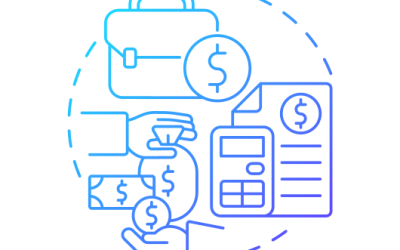Regardless of what you sell, your prospects move through 1 to 4 phases of your sales cycle: Awareness, Interest, Decision, and Action (or Conversion) based on whether they convert to clients or drop out earlier in your sales cycle. At each phase, outreach can be tailored for your prospect and automated to support your personal “hi-touch” approach. Also, you can be reminded to call a prospect just after your email was sent so that your one-two approach is effective.
Buyer’s Journey and Your Sales Cycle
Your sales cycle is the timeframe that buyers (prospects and customers) take on their way to purchasing a product or service. How you touch your prospective buyer before, during, and after each phase determines your conversion rate and, in most cases, you cannot do it alone! Review the 4 phases below and begin to craft your messaging and outreach for each phase.
- Awareness – People become aware of your offering through channels including advertising, social media, email marketing, networking, and your website.
- Interest – People want to learn about your offering and how it will solve their problem, so they engage with a call to action (CTA). A CTA could be a phone number to call you, a contact form, or an online/chat or message service.
- Decision – People recognize you can meet their needs, so they inquire about pricing and other options to help them make a decision.
- Action (or Conversion) – People make the decision to buy from you. They become a new customer or a returning customer.
Think about the 12 touches needed to close most sales and spread them across the 4 phases. Use your CRM to send personalized, segmented outreach and track your prospects using your CRM’s sales funnel.
Most of us realize we cannot touch everybody all the time, yet we try. That’s when follow-up fatigue (FUF) sets in. A robust CRM supports focused, segmented messaging that moves your prospects to convert (or drop out) by curating your message at each phase. At each phase, ask what you can offer your prospect, deliver it to them, and watch as they move to the next stage.
Your Sales Funnel
Now that you have spread your planned touches across the 4 phases of your buyer’s journey, you can use your CRM’s sales funnel to track each prospect. Create as many stages as you want based on your typical buyer’s experience and let your CRM communicate automatically. Stages are often more detailed than the 4 phases of your buyer’s journey as they are tactical (i.e., Request demos or proposals).
Trigger actions based on what stage your prospect has reached. Assign tasks to your salespeople and see their activity. A robust CRM enables you to track prospects by sales rep, stage, and in total making it easy for managers and reps to see productivity and bottlenecks in the funnel.
People do not move from one stage to the next without guidance. We need to show them why it benefits them to move through the funnel. Your CRM can keep you top of mind with content relevant to your buyer’s phase, building their confidence and motivating them to learn more.
Managing Outreach
At each stage, your CRM can be used to:
- Send the relevant content for each phase automatically as part of a focused drip campaign using time-based triggers to move prospects through their buying journey.
- Integrate with landing pages to automate your company’s response and measure the impact of the messaging for each landing page.
- Add prospects to specific drip campaigns, based on the criteria you set, to send them your checklist, infographic, or introductory eBook.
- Create segmented lists based on criteria such as demographic, geographic, and buying behavior patterns so you can send specific and relatable information to each segment.
- Track your communication so everyone on your sales team knows what is happening. should they have to step in?
- Create quotes and proposals using templates and product tables reducing proposal preparation time. Maintain the record of the quote in the prospect’s record for immediate retrieval.
- Measure the results from your lead sources and referral sources so you know from where prospects come.
Awareness, Interest, Decision, and Action – What to Send When?
At Awareness, buyers need to know what you can do for them. They are searching for initial information and offering blogs, checklists, and educational webinars are among the ways to attract prospects and generate interest.
During Interest, show your prospects that you can meet their needs, plain and simple. Your prospect contacted you through a contact form, email newsletter subscription, or phone call. It is time to show them your “Stuff”. To build buyer confidence, offer prospects case studies, video demos, product spec sheets, and testimonials as examples of your work
At Decision time, people make their decisions based on their perceptions (and due diligence) about your ability to meet their needs, your customer service levels, and price. How do you move that prospect forward? Key offers at this Decision point include live demos, free trials, references, and coupons. At this point, your contact with each prospect is personal.
In the Action phase, the decision has been made and it is time to onboard your new client. Click the button in the CRM that says new customer and welcome your client aboard. Notify your relevant staff and coordinate your delivery. Your CRM helps you maintain your focus on each new client just as it did when you were tracking prospects.
Conclusion
A CRM is a tool to help you manage your interactions with clients and prospects. It helps you define, track, and manage your sales processes and funnel and measure your results. It helps reduce Follow Up Fatigue and it brings your sales team together. If you are not using a CRM, contact us for a free demo of X2CRM. We are an X2CRM partner and implement and configure X2CRM based on your business goals. We train you so you are ready to use it on day one and we provide enterprise-level support so you are not left in the dark.





